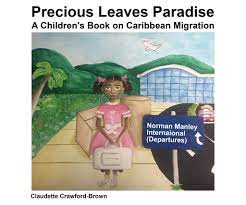
Week 3: All Work and No Play Leaves Precious Missing Home: Exploring Play Therapy in Jamaica
My virtual study abroad experience this week really tugged on my heartstrings. One session that I attended really opened my eyes to a major conflict occurring in Jamaica. This session was a short seminar that demonstrated the effect of play therapy on children who have experienced trauma in Kingston, Jamaica. Our lecturer was Dr. Claudette Crawford-Brown, a senior social worker from the Department of Sociology, Psychology, and Social Work at the University of West Indies (UWI) on the Mona campus. From her 30 year study titled, “The Jamaica Home Visit Intervention: 30-Year Study of the Impact on Adult Ability and Success,” she concluded that spending time to play with children could yield positive results including a change in attitude and behavior. In the session, she talked about the results of this study and her main strategies. Firstly, the house that she uses as a playhouse is also the space utilized for puppet theater. She calls the house the “wee” house. The “wee” house is located on the University of West Indies Mona campus outside in a safe area for her students to run around and play. Her main strategies include using puppets, sandboxes, coloring, music, and group scenarios to help students communicate their emotions or fears.
This session was so significant to me because it reminded me of one of my favorite music educators, Carl Orff. Carl Orff is known for his Orff Approach that includes improvisation, singing, acting, and creating music as a way to help students learn through play. His methods encourage mistakes and new discoveries. He believed that if a student was learning in a way that was fun and engaging that the student would internalize the musical material or concept. Because of his unconventional methods, he was heavily criticized. Dr. Crawford-Brown’s strategies are similar to Orff’s in the way that it engages students by helping them communicate deeper issues. These issues may include separation by migration, anger management, or peer mediation.
As a result of her extensive research, she created an entire curriculum that enables students to cope with the conflicts they face on a daily basis. One of the art forms that I surprisingly enjoyed was the use of puppets to re-enact conflicts to learn about peer mediation and coping mechanisms. One of the puppets that I found so profound was a puppet named Precious, who is the main character in Dr. Crawford-Brown’s book. In the puppet presentation, Precious is sent to America on her own. As simple as the puppet presentation was projected, I started to really imagine a child actually going through the confidential situations Precious went through. Not only was the environment incredibly dangerous, but she was also frightened for her life. This caused me to ponder how effective using something as simple as a puppet or a song could be on a younger student.
As teachers, we must be aware of the cultural experiences that our students have. We must reach them on a level they can understand without overwhelming them. I learned this week a teacher can only make a difference only if they are willing to be human and listen. When a student feels they are seen and heard, they grow in unexpected ways.
